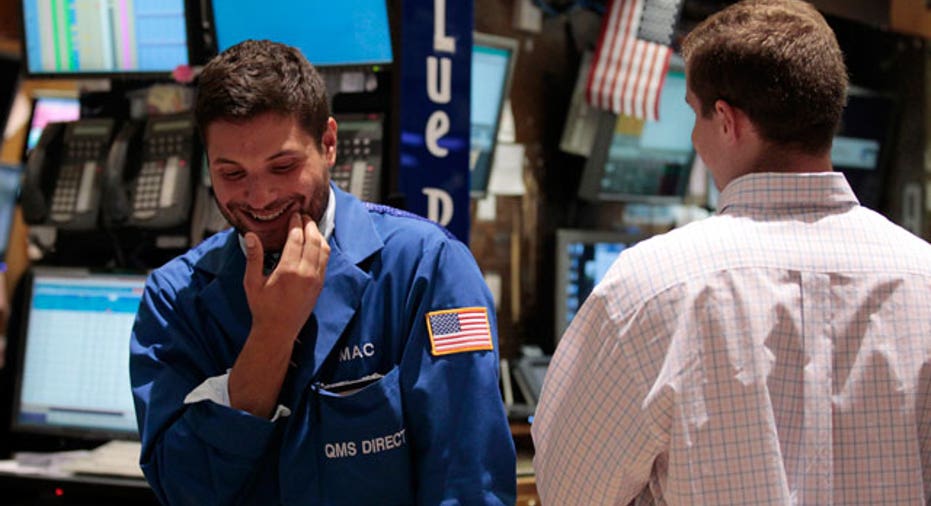Positive Factory Data Help Stocks See Strong April Start

If history is any indication, the positive market momentum on the first day of April could be a good omen for the rest of the month.
The Dow Jones Industrial Average rose 107 points, or 0.61% to 17792. The S&P 500 gained 13 points, or 0.64% to 2072, while the Nasdaq Composite tacked on 44 points, or 0.92% to 4914.
From a sector perspective, health care, consumer staples, and financials led the market higher, while energy and telecommunications lagged.
Today’s Markets
Stocks saw a zigzag session throughout the trading day as investors focused on a round of key economic data, and saw equity prices move in the opposite direction of oil prices for the first time in months.
The month of April is a traditionally bullish month for the markets. Since 1950, the Dow is up 1.9% on average in April, and it has ended on a positive note every fourth month of the year for the last 10 years.
After a muted finish to March, the major averages added to their year-to-date gains on the first trading day of the new quarter. For 2016, the Dow is up 2%, while the S&P is up 1.4% and the Nasdaq is lower by 1.85%.
A better-than-expected read on the U.S. manufacturing sector late Friday morning gave stocks their upward momentum. The closely-watched report from the Institute for Supply Management showed the gauge rose out of contraction territory for the first time in eight months, and notched the highest level since November 2014. The headline number of 51.8 was better than last month’s 49.5 reading, and above Wall Street’s expectations.
Analysts at Barclays said in a note the reading brings another sign of stabilization to the overall economy.
“With the value of the dollar having moved lower since the beginning of the year, and with financial stress having largely abated, manufacturing output may be returning to the modest positive trend in place before the large appreciate of the dollar between mid-2014 and late-2015,” the note read.
Traders also eyed data from the Labor Department, which came in mostly in-line with expectations. The March jobs report showed the U.S. economy added 215,000 jobs last month, more than the 205,000 new jobs expected.
Digging deeper into the figures, the labor force participation rate ticked up to 63%, though it helped push the jobless rate up from 4.9% in February to 5% in March. Additionally, the underemployment rate – or the number of people working part time but seeking full-time work – climbed to 9.8% from 9.7% the month prior.
While the report didn’t move the needle much on Wall Street Friday, analysts said the report is likely to add to the Federal Reserve’s confidence in the strength of the labor market as it looks to continue its path of policy normalization in future months.
Ameriprise Financial’s senior economist, Russell Price, called the report “solid.”
“Overall, we would give today’s report a high grade,” he said in a note to clients. “The report indicates job growth remains strong enough to continually improve oval labor market conditions, yet not too strong as to accelerate expectations regarding the path of Federal Reserve interest rate hikes.”
He said Ameriprise expects to see the central bank raise rates again June and December. Fed funds futures, a used to express the market’s views on changes in U.S. monetary policy, are pricing in a 52% chance of a rate rise in September, and a 65% chance of at least on hike by the end of the year.
Elsewhere in the market, global oil prices ended the session sharply lower. West Texas Intermediate crude, the U.S. benchmark, saw declines 4.04%, falling to $36.79 a barrel, while Brent crude shed 4.12% to $38.67 a barrel. The move lower came after reports Saudi Arabia, one of the world’s largest oil producers, would not freeze its output plans unless other major producers like Iran followed suit.



















